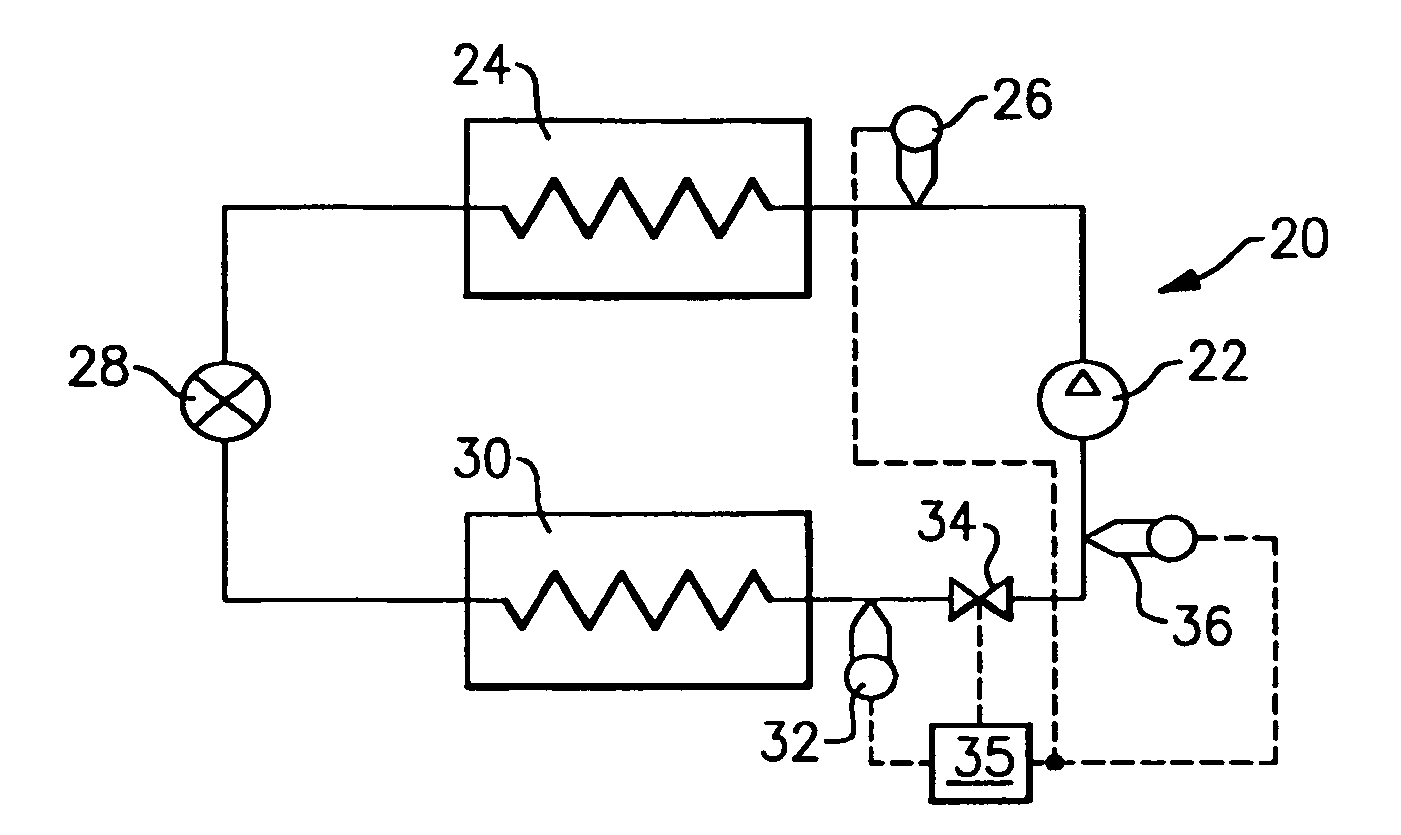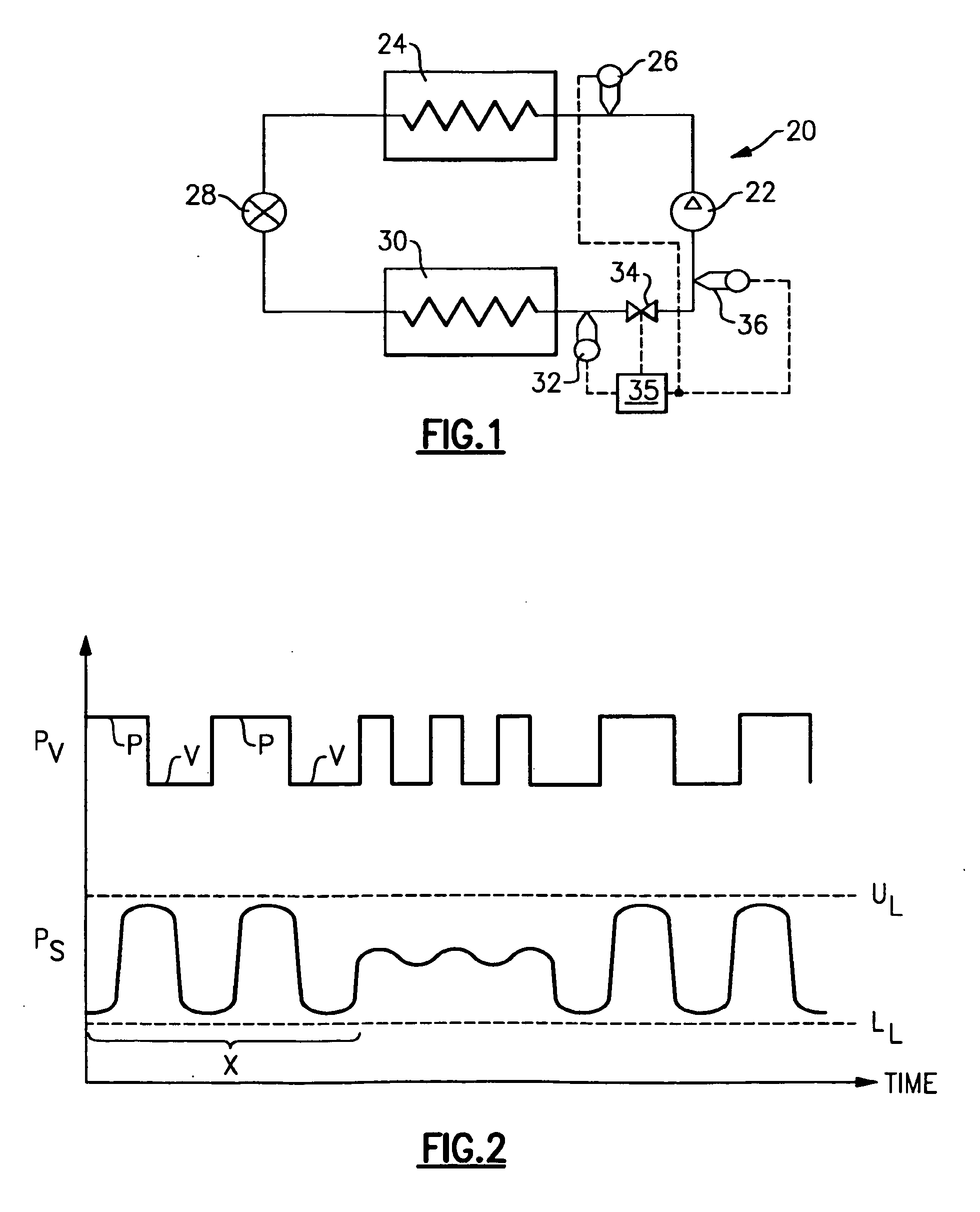Suction valve pulse width modulation control based on evaporator or condenser pressure
a pulse width modulation and valve technology, applied in the direction of process control, lighting and heating equipment, instruments, etc., can solve the problems of modulation valve, inability to control the operation of expansion valve, and system pressures across the refrigerant system can have undesirably large fluctuations, so as to reduce pressure fluctuation, increase the cycling rate of the valve, and the capacity provided by the refrigerant system can be varied.
- Summary
- Abstract
- Description
- Claims
- Application Information
AI Technical Summary
Benefits of technology
Problems solved by technology
Method used
Image
Examples
Embodiment Construction
[0012]A refrigerant system 20 is illustrated in FIG. 1 having a compressor 22 compressing a refrigerant and delivering it downstream to a condenser 24. A pressure sensor 26 senses the pressure near or at the condenser 24. The refrigerant passes downstream to an expansion valve 28, and then to an evaporator 30. A pressure sensor 32 senses the pressure of the refrigerant near or at the evaporator 30. A suction pulse width modulation valve 34 is positioned downstream of the evaporator 30. A control 35 controls the opening of the suction pulse width modulation valve. A pressure sensor 36 senses the pressure of the suction line leading from the suction pulse width modulation valve 34 back to the compressor 22.
[0013]The pressure associated with the condenser 24 (sensed by the sensor 26) and with the evaporator 30 (sensed by the sensor 32) are both transmitted to the control 35. The control 35 is programmed to achieve benefits as set forth below.
[0014]As shown in FIG. 2, the opening of the...
PUM
 Login to View More
Login to View More Abstract
Description
Claims
Application Information
 Login to View More
Login to View More - R&D
- Intellectual Property
- Life Sciences
- Materials
- Tech Scout
- Unparalleled Data Quality
- Higher Quality Content
- 60% Fewer Hallucinations
Browse by: Latest US Patents, China's latest patents, Technical Efficacy Thesaurus, Application Domain, Technology Topic, Popular Technical Reports.
© 2025 PatSnap. All rights reserved.Legal|Privacy policy|Modern Slavery Act Transparency Statement|Sitemap|About US| Contact US: help@patsnap.com


